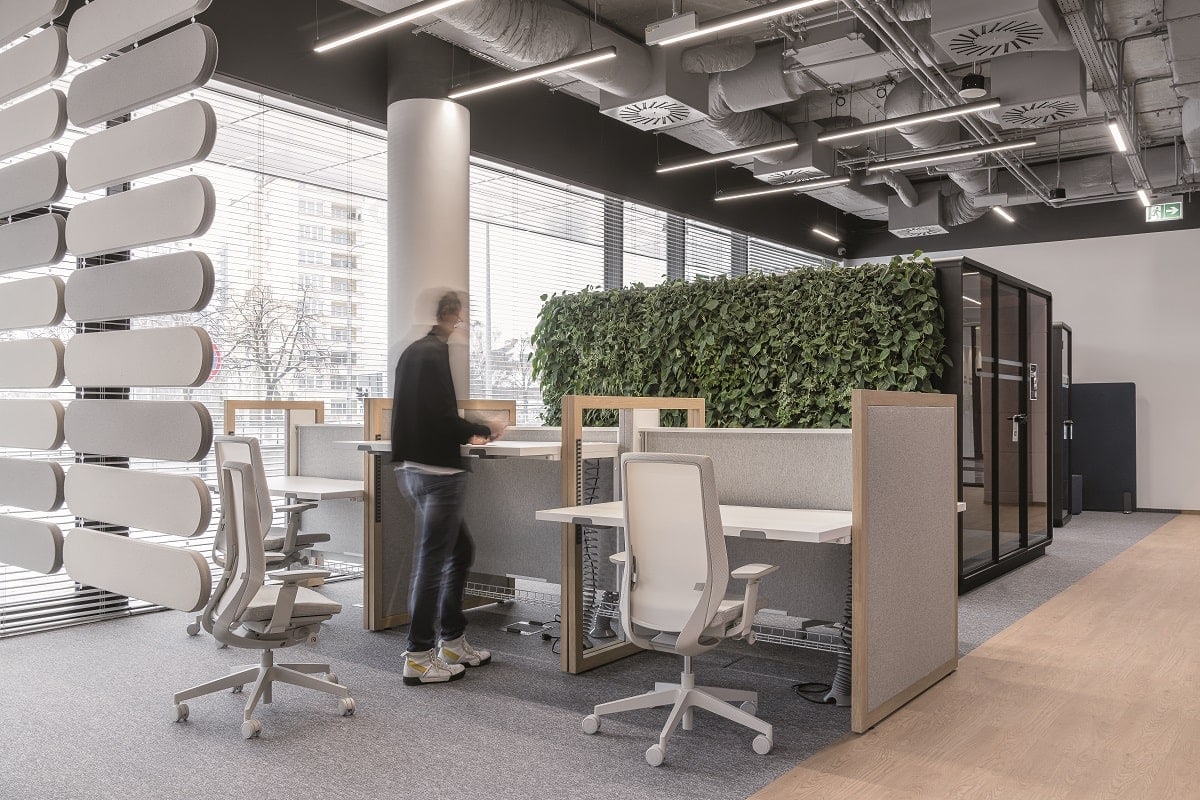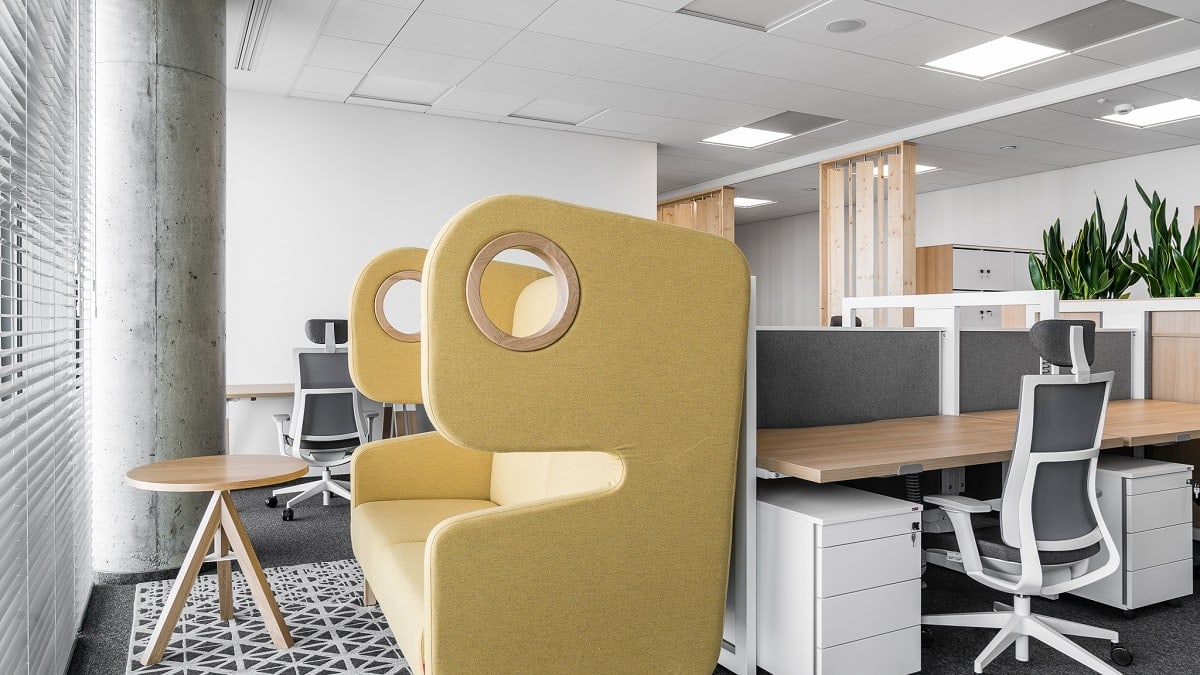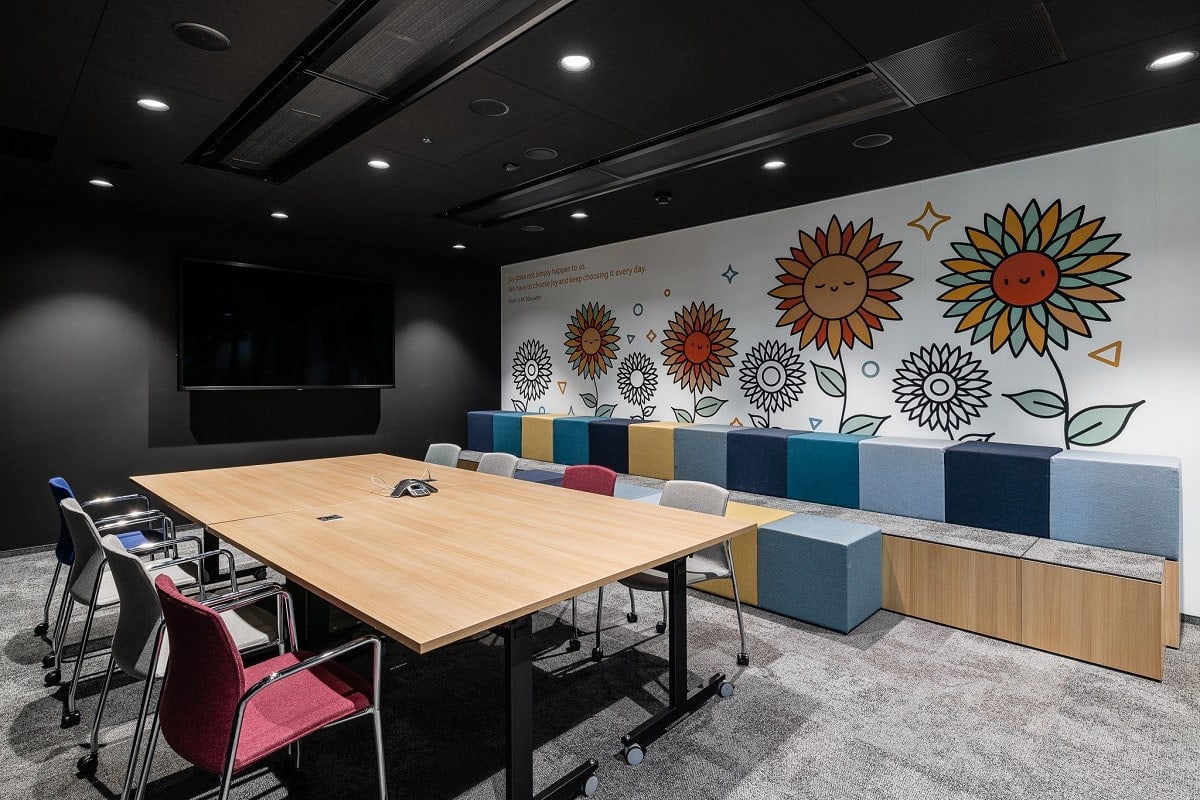An employee-friendly office space means what kind of space? How to create the perfect workplace.

In the times of dynamic changes in the world of work, when more and more organisations are moving towards a hybrid or fully-remote working model, the question of how to properly furnish the office space takes on new importance. Business offices are no longer just a place where employees come to do their jobs. They are the surroundings that can inspire, motivate and contribute to building relationships in teams. A properly designed office becomes an incentive that attracts talent, increases efficiency and promotes the culture of the organisation. Understanding how interior design affects staff efficiency, creativity and overall well-being is key to creating a functional and inspiring space. Read this article and find out how to arrange your office to make it employee-friendly.
Why is good office space design so important in the post-pandemic era?
An office space is not only a place where people spend a significant amount of their time, but also an environment that directly affects their efficiency, creativity and overall well-being. It has to meet the new challenges and expectations of workers from different generations in the post-Covid-19 era. At a time when remote working is becoming the norm, the office should offer more than just a place to work. Thoughtful and flexible solutions can attract employees back to the office by offering them a safe, healthy and inspiring environment.
However, this requires understanding new staff needs and responding to them through innovative design solutions. It is worth noting that office interior design has a significant impact on the stress levels, job satisfaction and commitment of the professionals employed. Elements such as natural light, plants, appropriate acoustics, ergonomic furniture or access to relaxation spaces can significantly improve employee well-being. All this, combined with good looks and functionality, creates an office space that is not only suitable for the post-pandemic era, but also adaptable for the future.
What our expert says
The environment in which employees do their work has a major impact on their performance. Working under pressure or in an environment that does not provide privacy makes it difficult to realise their full potential. A well-designed office makes people feel relaxed, excited about new challenges and always eager to turn up. In the times of hybrid work, creating spaces that are attractive and employee-friendly is an important part of maintaining high levels of efficiency and loyalty among professionals
– explains adds Eliza Donek, Product Manager at Mikomax.
Workplace in line with the human-centric workplace concept
The concept of creating an employee-friendly office space (human-centric workplace), focuses on designing an environment that not only takes the functional needs associated with the task at hand into account, but prioritises the well-being of people.
- The concept reflects genuine concern and empathy for the needs of employees. By involving them in the design process, personalised and innovative solutions can be created to meet the challenges of everyday work.
- Employees emphasise the role the office environment plays in achieving success in business, while also highlighting the importance of humanising workplaces.
- An office space that is employee-friendly is intended not only to increase the efficiency of the tasks performed, but above all to improve how well people can function in the company over the eight-hour working day.
Featured article: What kind of offices do employees dream of?
Features of an employee-friendly office space
The appearance of an office is key, while insufficient flexibility and functionality can deter interest from new talent in the market. Therefore, in order to attract and retain the best employees, businesses should ensure that the space is properly managed. That said, what factors do you need to consider when you plan your office in line with the human-centric workplace concept so that you can beat the competition?
Access of natural light
It is a major concern that employees have enough natural light coming into the office. The right workstation layout can significantly improve mood, concentration and even sleep quality. Designers should aim to maximise exposure to natural light, while providing blinds or shades to control its intensity and reduce glare on computer screens.
However, ensuring enough natural light in the office is not always possible. In such cases, the artificial lighting must be appropriately chosen to mimic the daylight spectrum. It is worth ensuring that it is tailored to the specific tasks performed by employees, namely, desks should be fitted with table lamps that provide bright, concentrated light, while communal areas can benefit from more diffused lighting.

A tidy and sensibly arranged space
The ideal office space must be visually appealing, but also tidy and well laid out. The harmonious arrangement of office furniture, the appropriate use of space (thanks to mobile office partitions) and the use of ergonomic solutions such as adjustable desks and chairs are indispensable for creating a comfortable environment. The office should be designed to optimise workflow, with easily accessible areas for different tasks. This allows employees to focus on their duties with comfort and freedom. Remember that the office space is not only a place to work, but it also represents your business, its image among both employees and clients.
Care for work-life balance
In a time when work-life balance is a priority, a friendly office is one that successfully combines the two. In the current labour market, it is crucial to offer flexibility, both in terms of working hours and the ability to perform tasks remotely. If the nature of the business does not allow such freedom, an alternative is to create a workplace that promotes active forms of leisure, like providing a games room in the chillout area or budgeting funds for the development of employees’ individual pastimes. Such strategies translate directly into increased satisfaction and, ultimately, loyalty and higher efficiency among employees.
How to create an employee-friendly office space? Tailored trends
It is important to understand that when we talk about ‘trends’ in office design, we do not mean specific interior decoration techniques, but rather certain concepts that informed employers interpret according to the requirements of their staff and the nature of their businesses.
Creating ‘green corners’ and chillout areas
Creating an office space that is employee-friendly is a process that requires consideration of the latest industry trends. The concept of biophilic design, i.e. designing workplaces with an emphasis on incorporating natural items, is gaining popularity. Spaces with integrated vegetation and raw, natural materials are more welcoming, healthy (improved air quality thanks to the flowers) and affects the employee experience.
In addition, chillout areas, fitted with ergonomic soft seating furniture and areas for meditation or even board games, are becoming an integral part of modern offices. The introduction of designer solutions, such as Packman sofas and armchairs, further enhances the aesthetics and functionality of these spaces, as they encourage employees to take a break to chat or relax. Biophilia and a well-arranged chillout zone in the office make it a place where people can both do their work efficiently and spend their leisure time.

Creating opportunities for physical activity – employees away from their desks
Employees who are forced to sit at one desk for long hours often experience discomfort, fatigue and a decrease in efficiency. One solution to this could be the introduction of manual height-adjustable desks. Fitted with a simple mechanism, they encourage a change of position from sitting to standing several times a day.
With workplace divided into a variety of work zones, such as acoustic cubicles for staying focused on tasks and video conferencing, collaboration spaces, as well as comfortable sofas for informal meetings, employees can choose the space that best suits their current needs. However, properly designing such a space requires an understanding of team dynamics and individual staff preferences.
Home office design – when in the office, feel at home
The pandemic and the resulting home office work have initiated a certain transformation. Employees are looking for more homely office spaces where they feel comfortable. This is why, when designing collaborative areas, it is particularly worthwhile to use a resimercial design concept that combines the features of an office (‘commercial’) and a flat (‘residential’) in the arrangement.
Items like potted plants, artistic prints, comfortable upholstered furniture, warm lighting and free-standing tree-shaped partitions help to break up the formal look of a typical office space. The key is to combine functionality with objects that evoke the intimacy and charm of a private space. Even an office kitchen should be designed to resemble a home kitchen, conjuring up a place for chat over coffee.
You can read more about it in the article: What makes employees feel at home in the office?

Multifunctional space that adapts to needs
Created for flexible use of space, the shared desking concept redefines traditional, fixed workspaces. Through the use of modular furniture, dynamic and multifunctional zones can be created, which can easily be modified by employees according to specific tasks, projects and individual team needs. The modular cube system for the office fits in with the idea of flexibility and allows you to create comfortable spaces for phone calls, meetings, relaxation or creative work. They are ideal for conference rooms, chillout rooms, meeting rooms and wherever creativity and functionality go hand in hand.
Are you keen on transforming your office into a welcoming place for your employees?
Check out our range of office furniture for flexible office design >>
